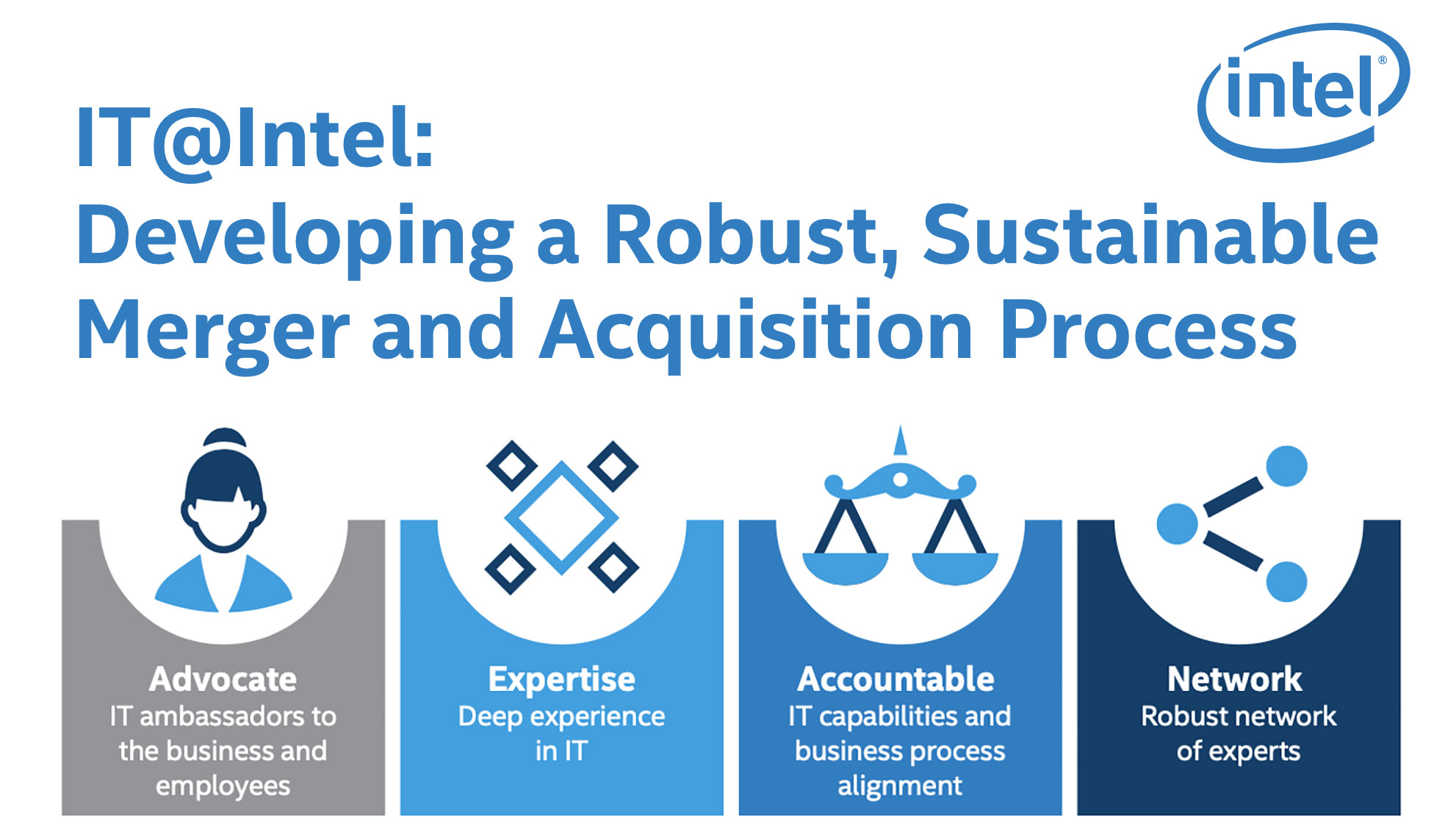Developing a Robust, Sustainable Merger and Acquisition Process

IT Best Practices: A robust merger and acquisition (M&A) process (which also applies to divestures) is a growing aspect of Intel’s business. But there is nothing simple about evaluating and integrating technologies and business capabilities or supporting incoming employees. IT organizations must use their experience to focus on the following areas:
- Security and privacy. Cybersecurity and privacy pose a particular risk to the value of M&A before, during, and after closing the deal.
- Integration. Understanding new business capabilities and the challenges of data harmonization are necessary to developing a phased and prioritized approach.
- Technical debt. Existing systems are not phased out overnight and must be maintained until integration is cost e?ective and/or necessary.
At Intel, we have a dedicated IT M&A team that does more than execute on deals. We participate in due diligence discovery, planning, and integration to help Intel secure greater business value, and sometimes highlight potential unforeseen costs. We use an M&A lifecycle process to approach each deal with guiding principles of putting employees, suppliers, and the business value first.
The IT M&A team advocates across IT to help deliver customized, secure, and cost-e?ective solutions, and brings expertise in its operating model, strategy, and capabilities. We are accountable for aligning IT capabilities and business processes, and our robust professional network brings a cohesive approach to each deal.
Divestures—or separation programs—can be as challenging as acquisitions. They are largely dictated by the buyer’s integration plan, giving us much less control. When planning a divesture, we use the following:
- Mission critical (Pre-sign). This is what must be in place at or immediately after close. It requires a full assessment of the IT footprint being divested, transition services agreements (TSAs), partner and commercial agreement alignment, and working with the buyer to develop a “Day 1” plan.
- Initial separation (Close/Day 1). These are initial separation activities, such as removing separated employees from IT systems, exporting relevant data, physically moving people, putting TSAs and commercial support in place, and updating IT systems to re?ect sold inventory.
- inal separation (Day 2). This is the final separation of IT capabilities, such as extracting deal-relevant data from all remaining systems, terminating TSAs, and cleaning up connectivity, assets, and so on.
M&A is not simple, but in today’s business it is increasingly more common. While many organizations outsource this work, at Intel we have achieved great success by forming a dedicated IT M&A team that handles due diligence as well as integration. With a consistent M&A lifecycle process, we have built years of experience in evaluating, prioritizing, planning, and executing the integration of incoming organizations and the separation of divestures.
Cybersecurity is a particularly risky area as breaches can result in unforeseen costs, and even devaluation of the deal. Our planned approach brings a clearer understanding of the challenges, opportunities, and risks that help us add value to the business and ease the transition for employees
For more information on Intel IT Best Practices, please visit intel.com/IT
Posted in:
Intel, Intel IT, IT White Papers, IT@Intel

